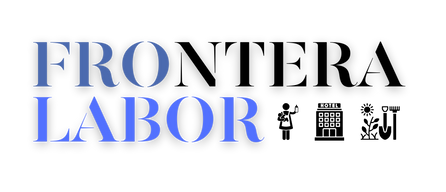Navigating the complexities of U.S. immigration and employment certifications can be daunting for employers. One significant hurdle is responding to a Notice of Deficiency (NOD) issued by the Department of Labor (DOL) concerning the validity of an H-2B application. Recently, I successfully assisted a client, Jane Doe, in overcoming such a challenge while seeking to hire a full-time nanny. This case underscores the importance of leveraging pivotal case law and strategic legal advocacy to secure necessary certifications.
Understanding the Context: The H-2B Application for a Full-Time Nanny
Jane Doe initially employed an au pair under the J-1 visa program to assist with childcare. However, as the family’s needs evolved—particularly due to non-traditional work schedules and increased hours—the part-time au pair arrangement became insufficient. Seeking to transition to a full-time nanny position, Jane filed an H-2B Temporary Employment Certification. This transition prompted a DOL Notice of Deficiency (NOD), questioning the legitimacy of the application based on the family’s prior employment of an au pair.
Strategic Legal Response: Leveraging MysticAngels and HelpingHands Decisions
The cornerstone of our response to the NOD lay in two pivotal arguments supported by recent decisions from the Board of Alien Labor Certification Appeals (BALCA): MysticAngels, LLC (2023-TLN-00122) and HelpingHands II (2024-TLN-00066). These cases provided critical legal precedents that clarified the distinctions between part-time and full-time childcare employment.
(Both cases were ones I argued and won before BALCA in the past two years, and in each case I had sought to “seed” the H-2B program with language that could be employed in defense of private family employers looking to bring in nannies and caregivers into the United States through the H-2B program.)
1. Prior Part-Time Employment Does Not Preclude a One-Time Occurrence Classification for Full-Time Needs
MysticAngels, LLC established that prior or current part-time employment in a related role does not disqualify an employer from obtaining certification for a one-time occurrence need if the new position involves full-time work with expanded duties. Similarly, HelpingHands II explicitly stated that “the prior or current employment of a part-time worker to perform the same service or labor that is now needed on a full-time basis is not a bar to establishing a one-time occurrence need.”
In Jane Doe’s case, the family’s reliance on a part-time au pair and intermittent babysitters highlighted a significant shift in childcare needs, justifying the transition to a full-time nanny. The nanny role expanded from 25-45 hours per week (au pair) to 40-60 hours per week, including weekends, encompassing broader responsibilities such as meal preparation and extended care duties.
2. Prior Employment of an Au Pair Does Not Equate to Full-Time Nanny Employment
BALCA has consistently held that the roles and responsibilities of an au pair under the J-1 visa differ significantly from those of a full-time professional nanny. The Stickle Family Case (2018-TLN-00154) underscored that employing au pairs does not equate to employing full-time nannies due to differences in duties, hours, and permanency.
In Jane Doe’s situation, the au pair’s limited hours and specific duties did not fully address the family’s needs, especially with both parents holding non-traditional work schedules. The nanny position required a more permanent and comprehensive childcare solution, aligning with the family’s long-term needs.
Utilizing Precedent to Strengthen the NOD Response
By drawing on the MysticAngels and HelpingHands II decisions, I was able to construct a robust legal argument demonstrating that Jane Doe’s transition from a part-time au pair to a full-time nanny was both necessary and justified. These precedents clearly differentiate between part-time and full-time childcare roles, supporting the legitimacy of Jane’s H-2B application despite prior au pair employment.
Outcome: Approval of the One-Time Occurrence Certification
The strategic response, grounded in the MysticAngels and HelpingHands decisions and bolstered by detailed evidence of the family’s evolving needs, led to the successful approval of Jane Doe’s H-2B application for a full-time nanny. This outcome not only resolved the immediate deficiency but also set a precedent for similar cases where employers seek to transition from part-time to full-time childcare solutions.
Lessons Learned: Best Practices for Overcoming H-2B NODs
- Stay Informed on Case Law: Keeping abreast of the latest BALCA decisions can provide critical support in framing arguments that align with current legal interpretations.
- Provide Comprehensive Documentation: Detailed statements of need and thorough explanations of prior employment arrangements are essential in demonstrating the legitimacy of the new position.
- Differentiate Roles Clearly: Clearly delineating the differences between previous part-time roles (e.g., au pairs) and the sought full-time positions helps establish the distinct nature of the new employment need.
- Highlight Economic and Logistical Necessities: Demonstrating how prior arrangements were insufficient and led to economic hardship or logistical challenges can strengthen the case for a one-time occurrence classification.
Conclusion: The Power of Strategic Legal Advocacy
Navigating the H-2B certification process, especially when responding to a Notice of Deficiency, requires a nuanced understanding of both regulatory frameworks and pertinent case law. Jane Doe’s case exemplifies how strategic legal responses, underpinned by pivotal BALCA decisions like MysticAngels, HelpingHands I & II, and others, can effectively address and overcome challenges posed by the DOL.
By leveraging these legal precedents and providing detailed evidence of the distinct and evolving needs, employers can enhance their chances of securing necessary certifications to meet their unique employment needs. This ensures both compliance and operational efficiency, ultimately fostering a stable and supportive work environment.
Jane Doe’s successful navigation of the H-2B NOD process stands as a testament to the power of informed, strategic legal advocacy. For those seeking to overcome similar challenges, understanding and applying relevant case law is not just beneficial—it’s essential.





